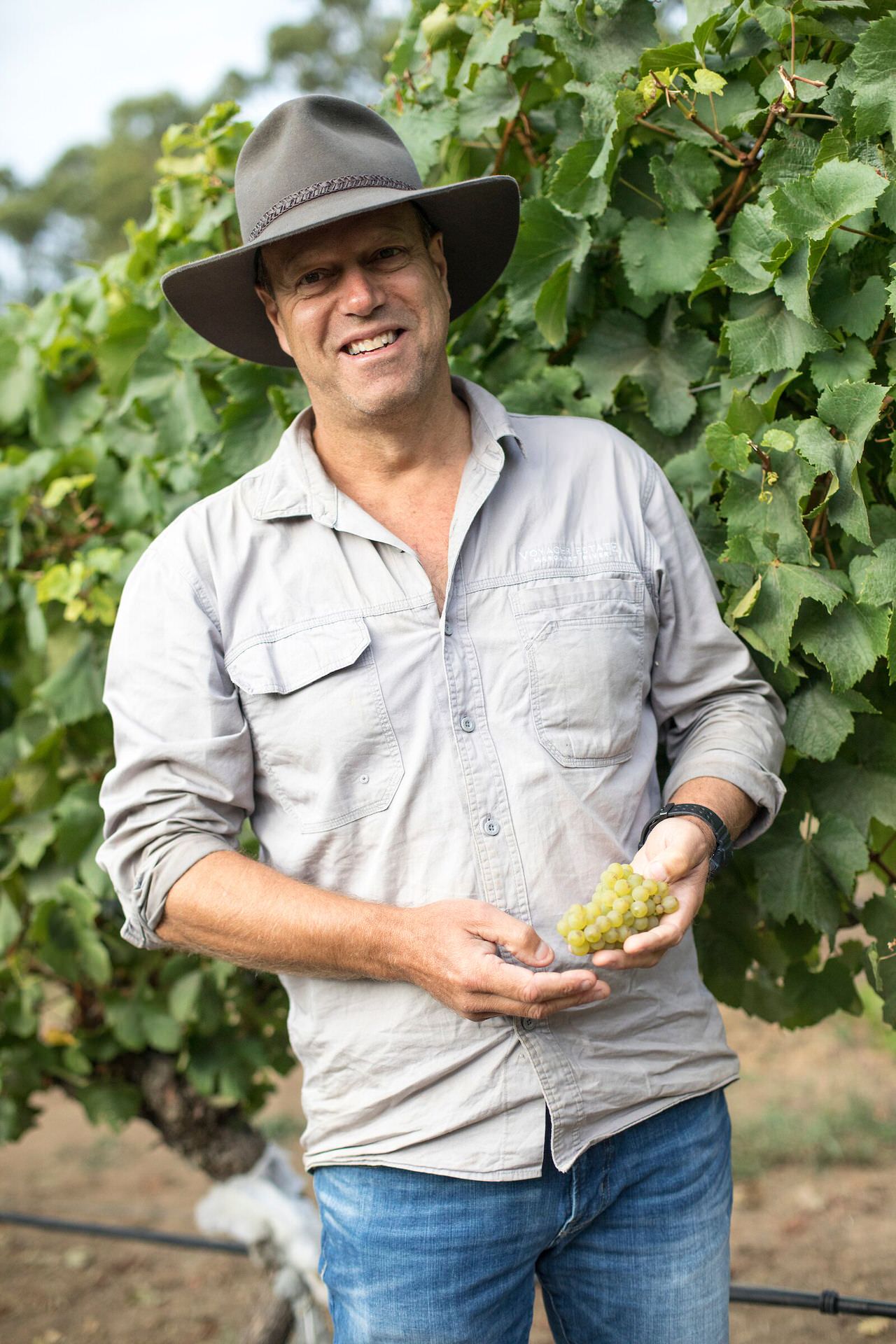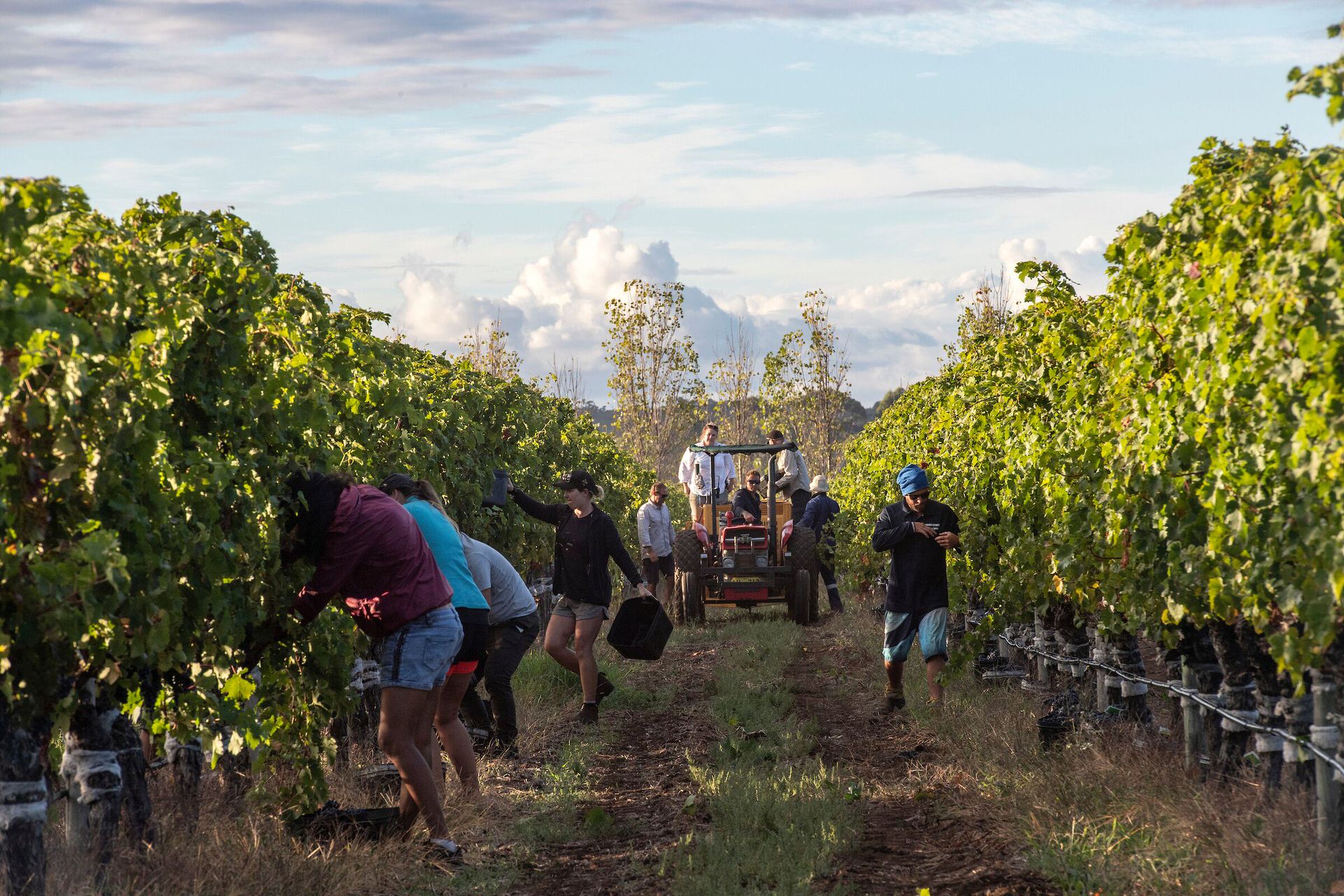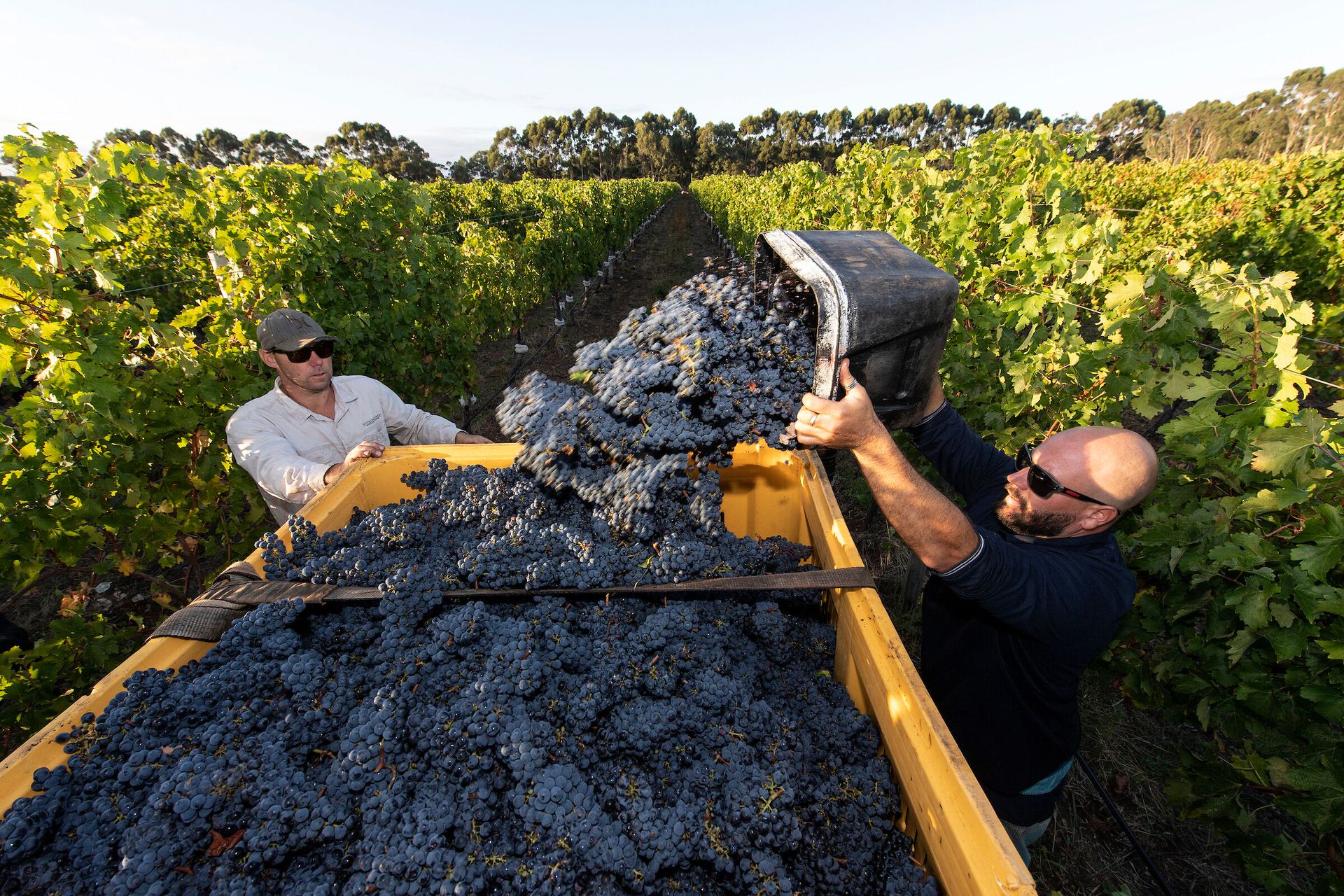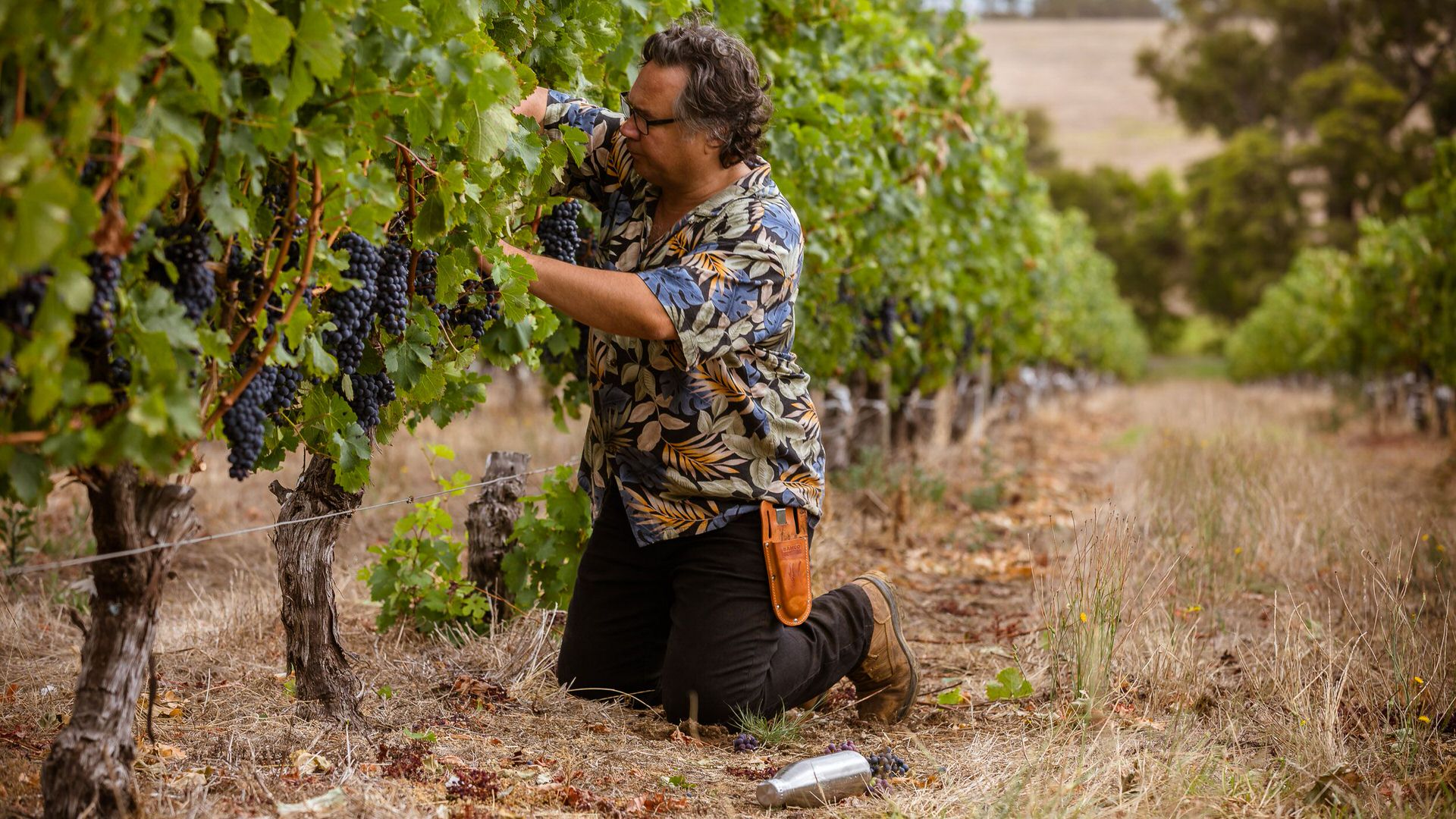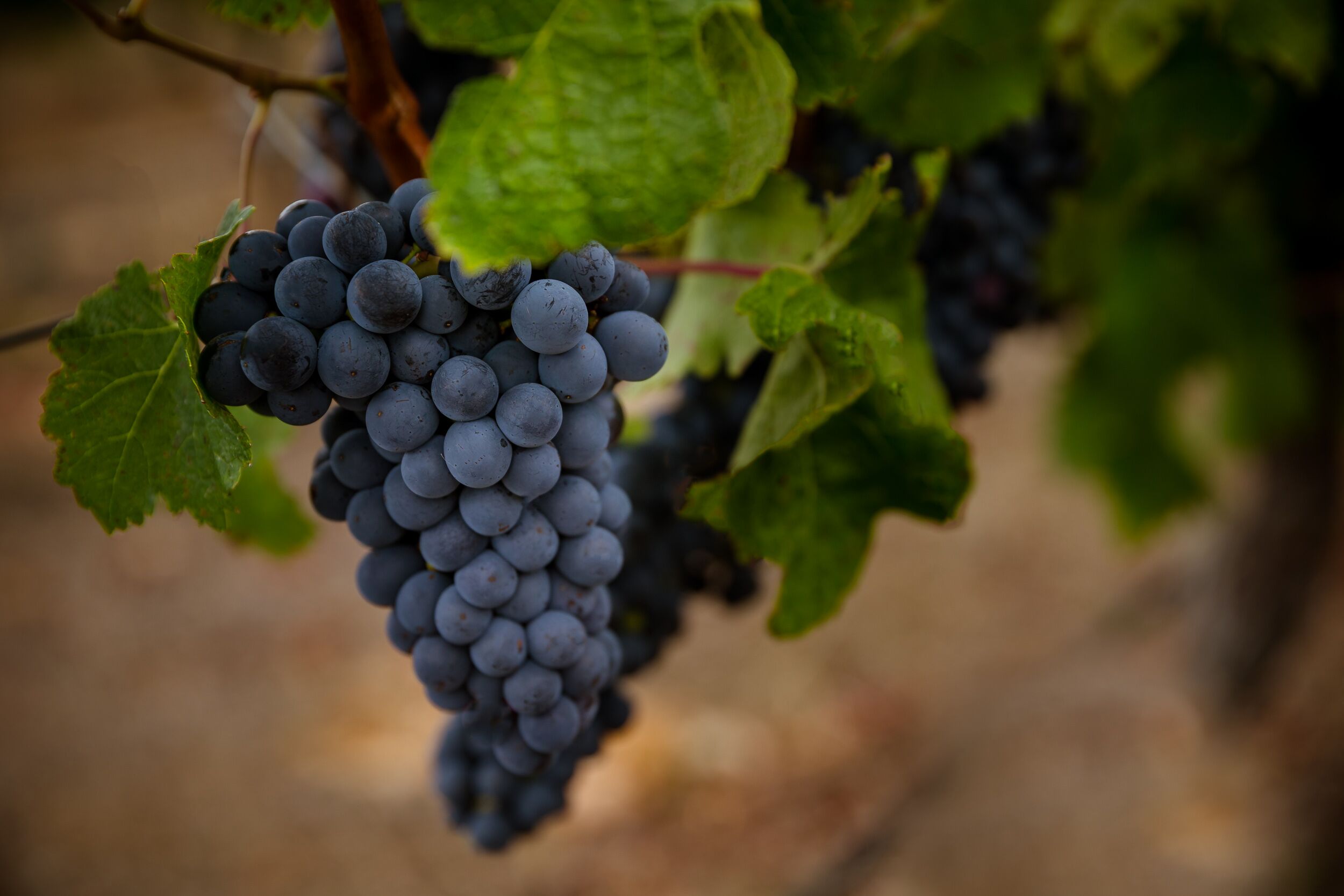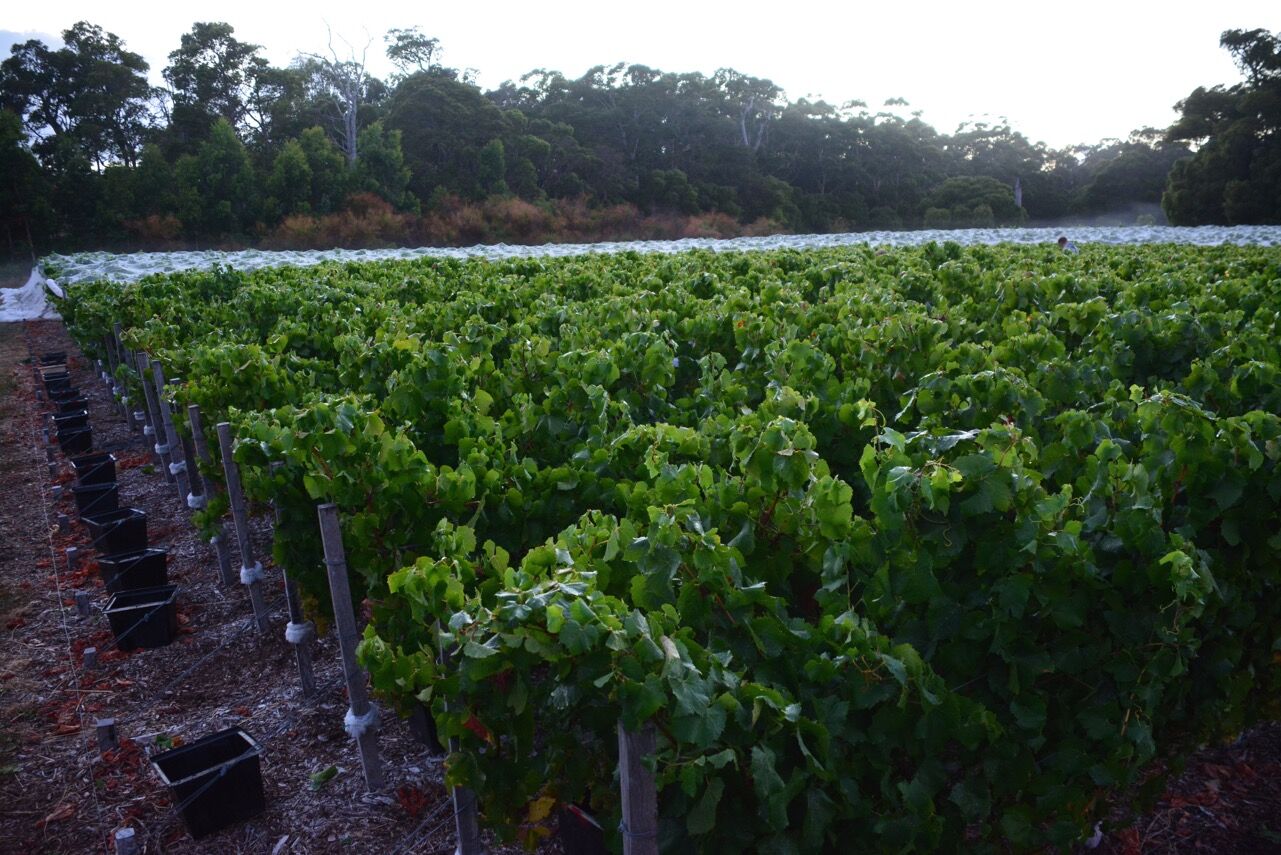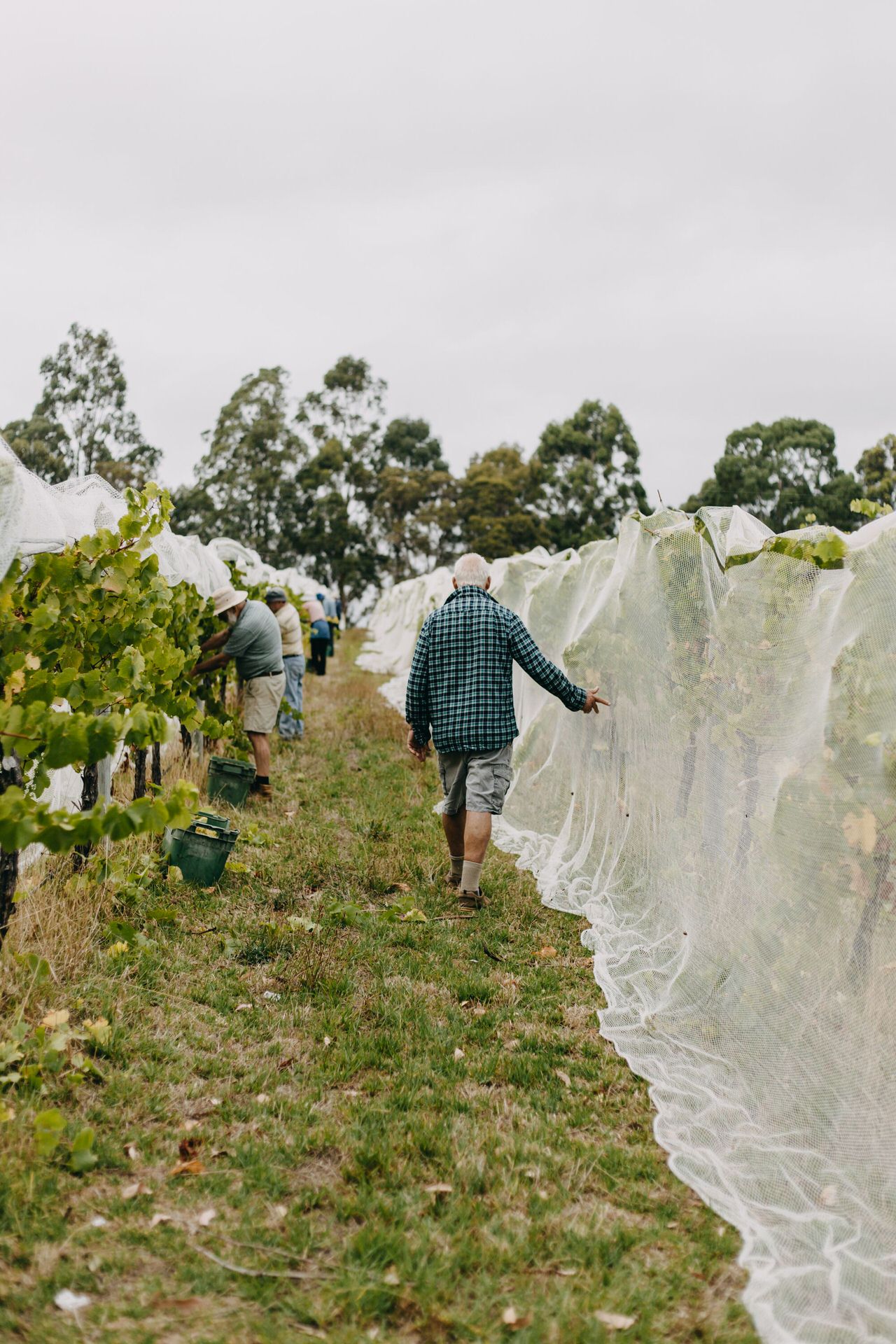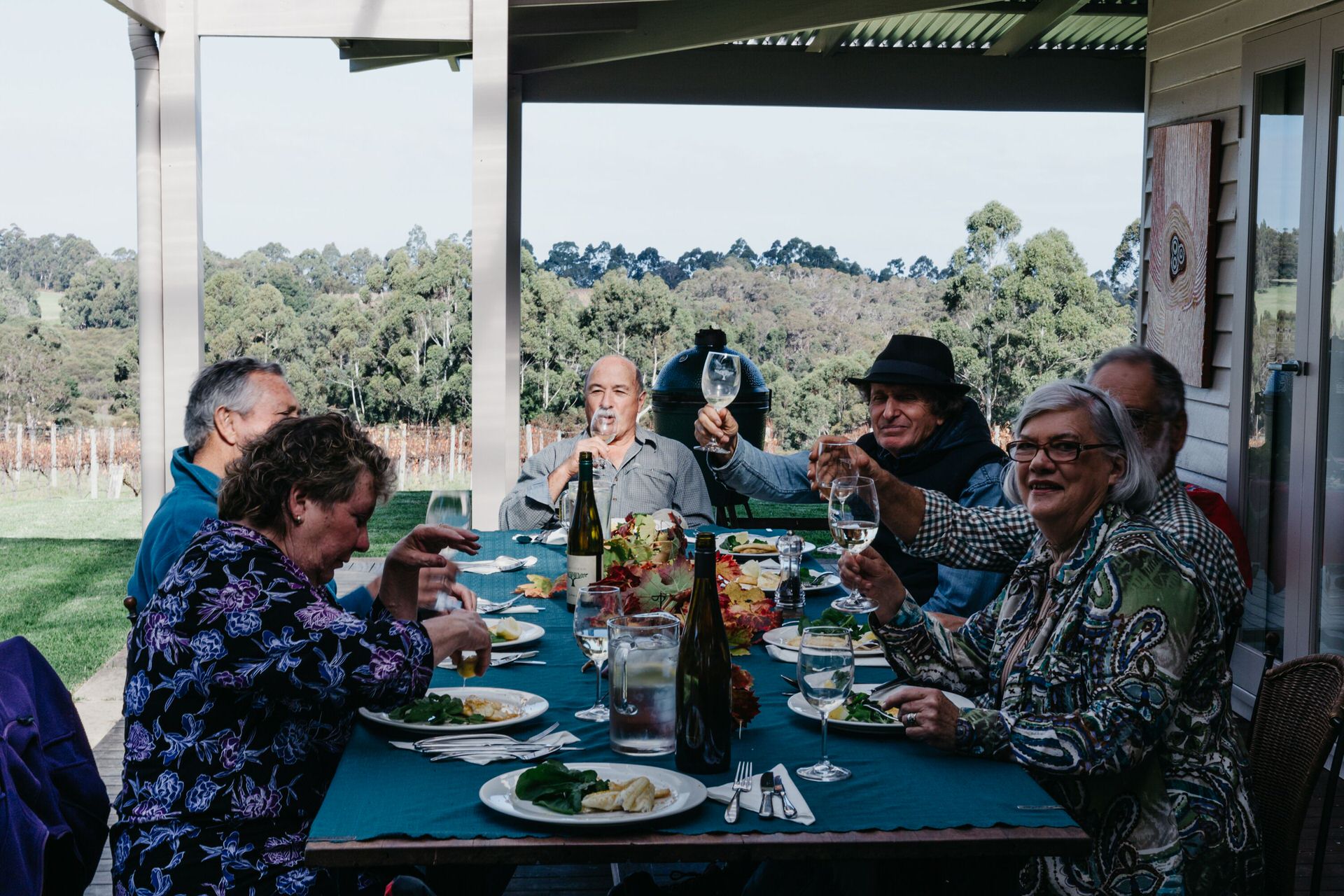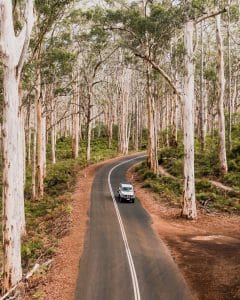Thursday, February 7, 2019
A vintage year: the South-West’s grape harvest demystified
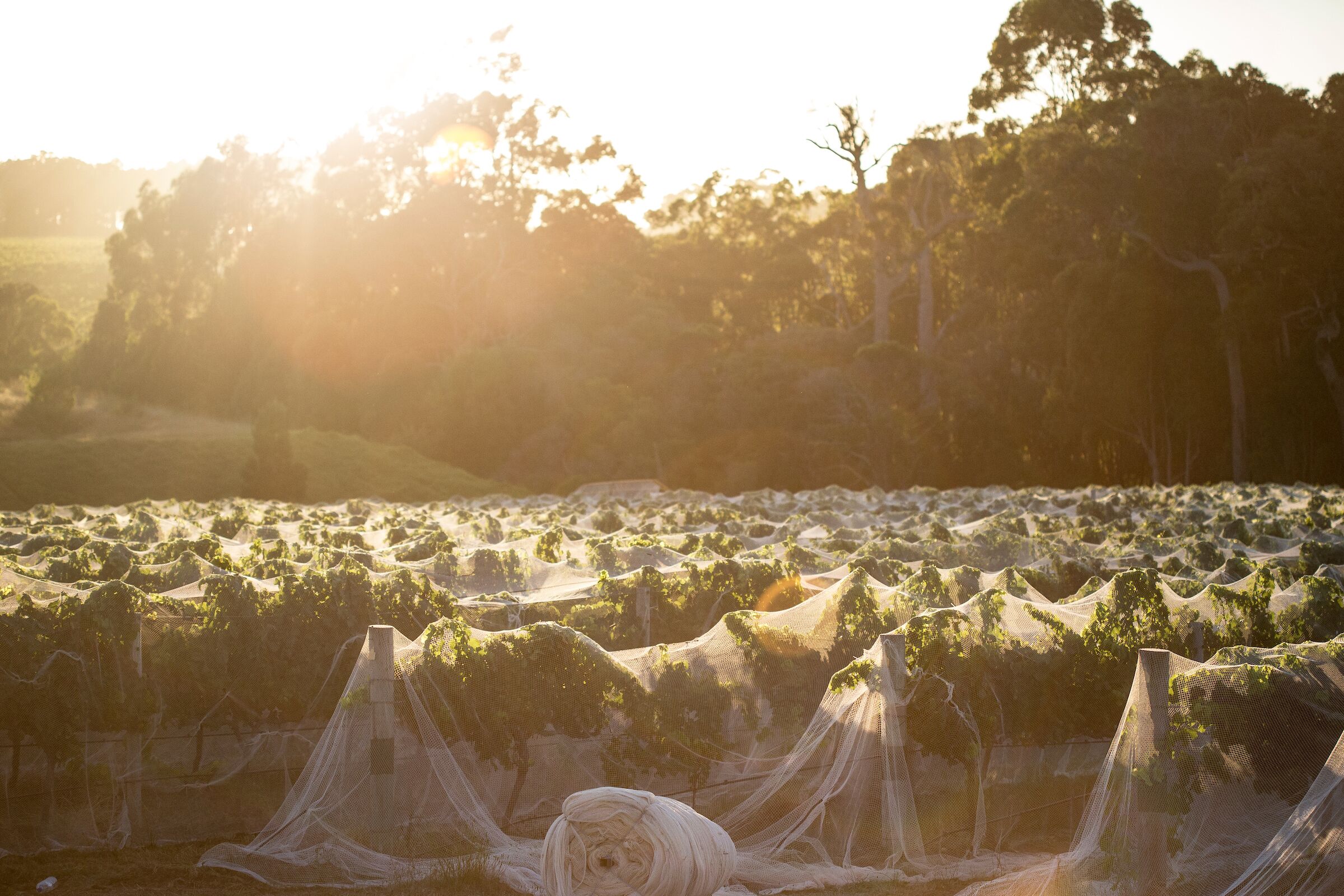
Vintage — or the annual grape harvest — is one of the busiest and most exciting times in the South-West.
If you’re on holiday around Margaret River and other viticultural hotspots between February and April, there’s a strong possibility you’ll see evidence of harvest in action.
But what do you need to look out for? What does harvest look like? And how does it work?
We spoke to the people behind five wine labels across the region in a bid to demystify harvest — and each had a very different tale to tell.
When does grape harvest happen each year?
Steve James is the head of viticulture and winemaking at Voyager Estate in Margaret River.
He said the timing of harvest each year depends very much on the weather that has been experienced in the months beforehand. In Margaret River, the first grapes are often ready around the second week in February – although Steve said the cool summer this year means vintage looks set to start about 10 days later than usual.
“You go through a stage in the vines called ‘veraison’, which is a time when the berries start to colour up,” he said. “They accumulate sugar and start to develop flavour.
“That’s when you start to get excited, because harvest isn’t far away.”
So, how do winemakers know when it’s time to pick?
“You taste the berries,” Steve said. “That’s a key component to making the harvest decision.
“So, with Chardonnay, for example, you’re looking for nice sweet citrus, grapefruit, lemon, stone fruit. Once you start to see those flavours and the vegetal or herbaceous flavours have disappeared, then harvest happens quite quickly because that’s what you’re trying to preserve in the wine, those flavours.”
If you’re travelling through the South-West there are two ways you’re likely to see grapes being harvested – by machine and by hand.
So, what should you be looking out for as you’re driving around the winegrowing regions?
“You’ll see a lot of activity, like bird netting coming off the vines,” Steve said.
“Be more careful on the road because there are a lot of trucks – as grapes are being moved around. In some vineyards you’ll see mechanical harvests going around. There’ll be lights on at night-time.
“Your whole year’s work comes down to vintage, so it’s an exciting time.”
Early starts for grape pickers in South-West vineyards
It might be an exciting time, but it’s also one of very early starts. So you’ll have to be up early if you want to witness the action.
David Martin, owner of the organic Stormflower Vineyard at Wilyabrup, said the early starts ensure the grapes are kept cool.
“It’s important that when whites are harvested they are kept cool all the way to the winery,” he said. “For the reds, they will start harvesting probably around dawn and finish up about mid-morning, because keeping cool isn’t quite so important.”
Stormflower uses both hand- and machine-picking methods and David said there are good reasons viticulturalists use one over the other at any given time.
“When you machine harvest, whatever is on the vine you end up with in the wine — so there could be little bits of leaf, petiole, and less-mature fruit,” he said.
“This means the wines tend to be not quite as mature and pure in terms of their flavour profile and the aromas.
“With hand-picked grapes you’re basically just getting the fruit you want. So, our premium cabernet and chardonnay will be hand harvested, but the grapes going into our more moderately priced wine we generally machine harvest.”
Hand harvesting is about four times as expensive as machine harvesting.
First-ever vintage an exciting time for this experienced winemaker
Bruce Dukes of Domain Naturaliste is a familiar name in Margaret River, having worked as a winemaker for many years. But the 2019 vintage is going to be a very special one for him – it will be his first on his own vineyard.
In July last year, Bruce purchased the 21-hectare vineyard of Knee Deep — a label for which he had been making wines for years. So, it was a vineyard he already knew like the back of his hand. The soil on the site, he said, is “like Christmas cake for vines”.
“I’ve waited for a long time — until I at least had the internal belief that I could do all of it properly,” Bruce said. “There’s certainly been the passion and desire to do it for many years, but these things are often about timing and balancing family and business.”
He’s incredibly excited for his first harvest and said he can’t wait to be out in the vineyard “in amongst it all”.
“It’s probably the best time of year for me because there is a complete focus on the fruit and the winemaking – despite the hours being the toughest and the longest,” he said.
“It’s about capturing that fruit and harvesting it at the right time that suits your style and what you’re doing. The decision on when to harvest is really important because it has a large impact on the composition of the fruit and therefore the quality of the wine.”
So, is choosing the right moment to harvest an art or a science?
“The science can help you a little bit with the few things you can measure, but I think it mainly comes down to an intuition and trusting your sensory evaluation of the fruit and your understanding of the vines,” Bruce said. “The numbers you can generate will most often give you the wrong decision. Using your palate and your gut instinct will generally give you the better outcomes.”
And Bruce has high hopes for a stellar 2019 vintage.
“We have similar growing conditions this year to the magnificent 2009 vintage,” he said. “I’m excited because I’m expecting super-fragrant wines with lovely textures and bright and balancing natural acidity. The characteristics will be perfumes and elegance.”
A small winery that prizes quality
Cloudburst is a small vineyard and winery near Margaret River. You won’t find it on the tourist map, there’s no sign out the front telling you where it is and there isn’t a cellar door for tasting.
But if you really know your wine, you’ll know Cloudburst.
Cloudburst founder Will Berliner likes to do things differently. His focus is on quality over quantity. So much so that he produces only 500 to 600 cases of wine a year. Many of those bottles become a part of some of the most impressive private wine collections in the world. Others will grace the tables at Michelin starred restaurants.
You’ve probably already guessed, but Will’s grapes are picked by hand.
“From the very beginning we’ve never had a machine in the vineyard,” he said. “Everything is done by hand.
“A lot of people will hand-pick for fine wine so there will be gentleness with the grapes, but they’ll pick a row or a section of a row, and pick the rest by machine.
“There’s a different level of selection for us because we process in extremely small lots. So, if it’s time to pick the chardonnay, 100 pickers descend and we pick the chardonnay.
“We lift the (bird) nets moments before we pick, so the fruit stays protected the entire time — right up to the moment it’s taken.
“In some cases, we may lift up the net, crawl under there, take some fruit and then put the net back on. We may not take all the fruit. That’s very different to everyone else.”
While the vineyard and the winery are small, harvest is no less “an event” at Cloudburst.
“Two years ago, one of the pickers had this amazing voice and she just sang us through it,” he said. “One year I played rock and roll. Other years we’ve had classical concertos. I read the people coming in. Sometimes it’s just silence.”
Passionate pickers do it for love (and wine)
That atmosphere in vineyards and wineries during vintage is incredibly exciting, filled with not only activity but camaraderie.
That’s particularly the case at Silverstream in Denmark, where the grapes are all 100 per cent hand-picked. Silverstream’s Pippa Johnston said the vineyard had “a loyal band” they call their “Passionate Pickers”.
“They’re locals of my parents’ generation — in their 60s and 70s — and they come and pick in return for lunch and wine,” she said.
Pippa’s parents had wanted to replicate what they had experienced traveling through France, where they were able to stop to help pick grapes in vineyards as needed.
“We do get some casual backpackers in sometimes if we need to get the grapes off fast. Our Passionate Pickers aren’t the fastest sometimes — they like to chat!”
Silverstream hosts a big post-harvest banquet — called a vendange lunch. It’s cooked by Chef Salmeri who comes down from Perth.
“Then everyone chooses what kind of wine they’d like to take home.”
If you’re heading to the South-West to enjoy some of the region’s famous and award-winning wines, take a look at some of the stunning holiday homes Private Properties has available throughout the region.
Sign up for our newsletter to stay updated on all things Private Properties.

